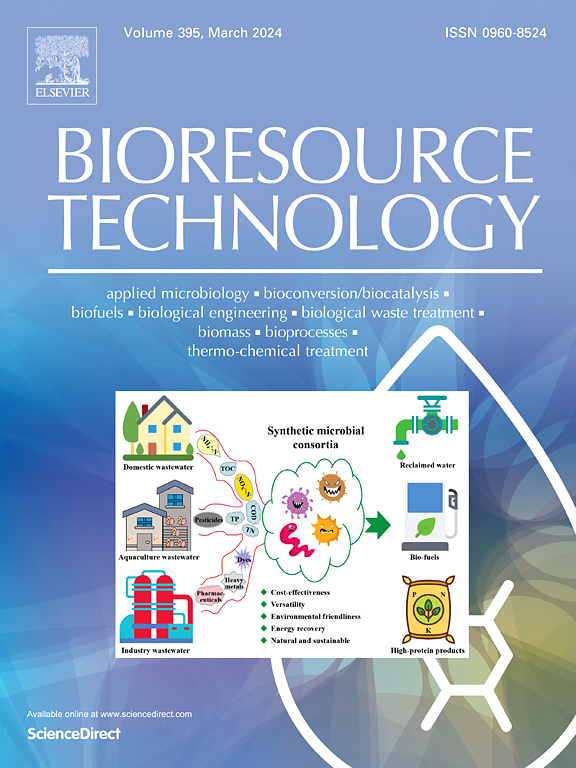Impact of bacterial cell concentration on microbial-mediated cerium carbonate precipitation for efficient heavy metal removal: Insights from adsorption isotherm, kinetics, and thermodynamics
IF 9.7
1区 环境科学与生态学
Q1 AGRICULTURAL ENGINEERING
引用次数: 0
Abstract
Heavy metals (HMs) pollution is a pervasive environmental issue needs significant attention through bioremediation. Present study investigated the potentiality of Microbial-mediated Cerium Carbonate Precipitation (MMCCP) in simultaneous removal of HMs (Cr, Pb, and Cu) using different cellular concentration of Sporosarcina pasteurii. Results from SEM analysis revealed formation of spherical and rod-like structures (∼112nm), and finally XRD and FTIR confirmed the formation of high-purity crystalline with surface-bound hydroxyl groups and ions, indicating successful cerium incorporation and formation in . Moreover, optimal removal efficiencies for Cr (99%), Pb (99%), and Cu (68%) were achieved within 80min at 6mg/L concentration and 0.05g adsorbent dose. Adsorption followed the Langmuir isotherm (R2 = 0.9) and pseudo-second-order kinetics, with thermodynamic parameters indicating spontaneity and exothermicity (ΔG < 0, ΔH < 0, ΔS > 0). These findings demonstrate MMCCP’s potential as an effective and sustainable approach for HMs remediation.

求助全文
约1分钟内获得全文
求助全文
来源期刊

Bioresource Technology
工程技术-能源与燃料
CiteScore
20.80
自引率
19.30%
发文量
2013
审稿时长
12 days
期刊介绍:
Bioresource Technology publishes original articles, review articles, case studies, and short communications covering the fundamentals, applications, and management of bioresource technology. The journal seeks to advance and disseminate knowledge across various areas related to biomass, biological waste treatment, bioenergy, biotransformations, bioresource systems analysis, and associated conversion or production technologies.
Topics include:
• Biofuels: liquid and gaseous biofuels production, modeling and economics
• Bioprocesses and bioproducts: biocatalysis and fermentations
• Biomass and feedstocks utilization: bioconversion of agro-industrial residues
• Environmental protection: biological waste treatment
• Thermochemical conversion of biomass: combustion, pyrolysis, gasification, catalysis.
 求助内容:
求助内容: 应助结果提醒方式:
应助结果提醒方式:


